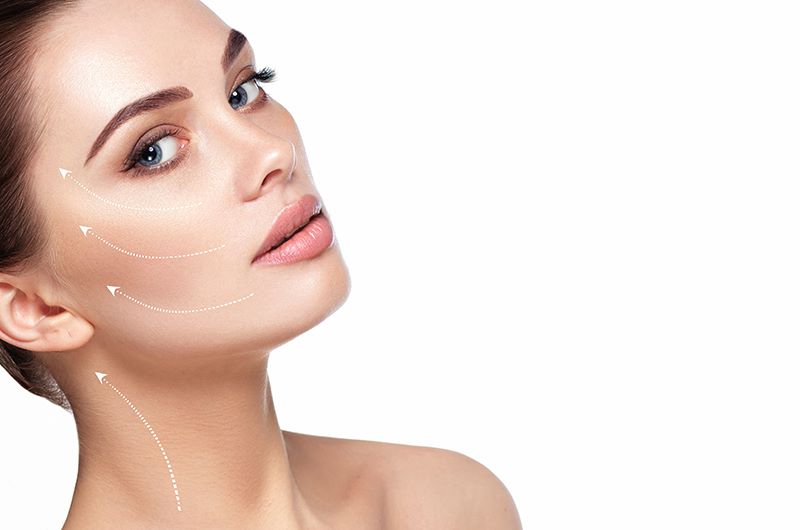
Bunion Removal
Your Bunion Removal treatment journey
Bunion Treatment Benefits
- The procedure is exclusive to The Private Clinic in the UK.
- Orthopaedic Consultant Surgeon and bunion specialist, Mr Bianchi is an expert in his field and has been carrying out bunion operations for 15 years.
- Over 1,200 bunion operation procedures performed each year in Italy and London.
- 98% success rate.
- Minimally invasive procedure, bunion removal surgery is performed under local an-aesthesia using keyhole techniques.
- No screws, plates, wires, or metal fixtures are used.
- 2-3mm skin incisions which leaves no scar.
- No crutches, so you can return to everyday activities with ease.
- Minimal post-operative pain and aftercare.
- Advanced bunion hospital and aftercare support.
- Walk immediately after surgery, with no crutches or extensive downtime required.
- Walk in walk out, minimally invasive day case procedure.
- Improved mobility and balance with a reduced risk of further complications.
- Increased confidence in wearing open footwear and a more youthful appearance of the feet.
Bunion Consultation in Bournemouth, Dorset
Consultations will be available at our Bournemouth clinic with Consultant Orthopaedic, Mr Andrea Bianchi. Mr Andrea Bianchi pioneered this revolutionary procedure. With over 15 years of experience, he performs over 1,200 procedures per year in the UK and Italy.
Specialising in orthopaedics and traumatology at the University of Studies of Perugia, Mr Bianchi went on to develop a unique and innovative technique for treating painful foot conditions such as bunions, hammertoe, tailor’s bunionette and rigid toes.
Together with his dedicated team, Mr Bianchi developed a minimally invasive approach to bunion removal surgery, inspired by keyhole surgery. His specialised technique is focused on effectively treating the feet whilst reducing the lengthy downtime and removing the use of fixative devices such as pins and wires.
During a consultation Mr Andrea Bianchi will:
- Listen to your concerns.
- Take an X-Ray image of your foot.
- Assess your bunion and look at your X-Ray images.
- Provide information on keyhole bunion surgery.
- Recommend the best treatment options for you.
- Discuss any risks associated with bunion surgery.
- Detail what is to be expected during recovery and what aftercare is required.
- Answer any questions you may have.
Your Patient Coordinator
Following your consultation, you will be allocated a dedicated patient coordinator who will follow up with you to provide you with a quote for your recommended bunion foot surgery treatment. They will then be your point of contact should you wish to go ahead with bunion surgery.
KEYHOLE BUNION SURGERY
Your keyhole bunion surgery procedure will take place at The Private Clinic’s London Fitzroy Hospital to ensure you receive the best level of care for your procedure. All treatments are performed as day case procedures, under local anaesthetic. The procedure itself takes around 30 minutes, but you can expect to be at the hospital for around 1-3 hours.

BUNION SURGERY AFTERCARE
Fully detailed post-operative advice will be provided to all patients and details for The Private Clinic’s 24 hour help line should you have any concerns following treatment. The effects of the local anaesthetic are likely to last for 24 hours. Pain and swelling are common post-procedure, and you will be provided with medication to help manage this. It is also advised to raise your leg whilst resting to reduce the swelling.
Bandaging and an orthopaedic shoe will need to be worn on the treated foot for around 25 days.
You will be encouraged to walk on the treated foot as normal to help it to heal in the correct position. The bandaging of the foot must be kept dry until your first follow-up appointment.
KEYHOLE BUNION SURGERY FOLLOW-UP APPOINTMENT
Your first follow-up appointment will take place around 25 days post-procedure. At this time, your medication will be changed, and your bandaging will be reduced. Your surgeon will also assess if you are ready to remove your orthopaedic shoe and switch to wide-fitting comfortable footwear.
An x-ray will then need to be arranged at around 45 days post-procedure and a second follow-up will take place with the surgeon on the day.
The bunion removal procedure explained
Developed by Orthopaedic Consultant Surgeon, Mr Bianchi who will be performing the procedure at our London bunion clinic. This is bunion surgery with a difference as patients are able to walk straight after surgery, have minimal downtime and more importantly no fixative devices such as screws or wires which are usually what causes patients discomfort post-surgery.
Small, surgical dental burs are used to correct the bunion deformity and modify the bones of the forefoot. These are inserted through small, approximately 2-3 millimetre incisions in the skin. The surgeon guides the bur using a special radiological device to help him ‘see’ the bones and the burs.
The bones are carefully fractured with precision and then realigned into a straight position; we call these geometric fractures. A series of geometric fractures will be made without forcing the bone into place using fixative devices, which allows the foot to heal naturally. As the technique does not force the bone to repair, the bones and joints heal in a natural position, according to the individuals load-bearing needs and not to a ‘pre-established’ standard. This results in greater functionality and comfort in the joint post-procedure.
After surgery, the foot is bandaged and taped using a technique specifically developed by Mr Bianchi’s medical team. A surgical orthopaedic boot will also need to be worn. You will return to clinic for your follow-up appointment around 25 days after the procedure. In most cases the bandaging will then be reduced, and you can remove your post-surgical shoe and wear comfortable wide-fitting shoes such as trainers.
You will be encouraged to bear weight on your foot shortly after your procedure to encourage the correct physiological readjustments and you will be able to walk out of the hospital without the need for crutches after your procedure. The bones are left to heal in a more natural position which results in better comfort and functionality post procedure. This technique quashes the concept that every fracture needs to be immobilised in order to heal.
BUNION REMOVAL FAQ
What are bunions?
A bunion, sometimes called a Hallux Valgus in medical terminology, is a foot malformation that typically affects the big toe. When your big toe pushes against your next toe, it causes the big toe joint to swell and protrude out the side of your foot. This is how bunions are typically first identified—a bony lump on the outside border of the foot.
How can you prevent Bunions?
It can be difficult to prevent bunions if you are prone to getting them because they are frequently inherited. You can take precautions to make sure your shoes have a wide toe region and fit your feet properly. Additionally, it is advised that you refrain from regularly wearing heels higher than 4 cm.
What are the signs and symptoms of bunions?
Common symptoms of bunions:
- Pain and tenderness at the base of the big toe
- Redness, swelling, or inflammation around the bunion
- Difficulty bending the big toe
- Formation of a callus over the bunion
- Difficulty finding shoes that fit comfortably
What causes Bunions?
Although the exact cause of a bunion is frequently uncertain, it is typically either acquired or congenital.
A congenital bunion is often a result of an inherited foot type or a deformity from birth.
An acquired bunion could be a result of ill-fitting / uncomfortable shoes or a previous foot injury.
Medical conditions such as arthritis, rheumatoid arthritis or osteoarthritis can also make you more prone to developing a bunion.
Is Hammertoe or Tailor’s bunion Surgery available?
Yes, Mr Andrea Bianchi has extensive experience in treating not only bunions, but other related conditions such as Hammertoe and Tailor’s Bunion. They are all performed in a similar manner under local anaesthetic with no need for wires or screws.
To find out more about our minimally invasive bunion treatment and surgeon, contact our Bournemouth clinic to book a consultation.
What is the cost of minimally invasive keyhole bunion surgery?
Initial Consultation:
Your initial consultation with our expert Orthopaedic Surgeon, Mr. Bianchi, is £200. This fee includes an in-house X-ray of your feet. During the consultation, Mr. Bianchi will explain the keyhole bunion operation in detail, highlighting its unique features and advantages.
Procedure Cost:
The cost for our minimally invasive bunion operation, which avoids the use of screws, wires, or metal pins, starts from £5,990 for one foot. This includes the cost of the X-ray required post-operatively. £4,520 for the second foot.
Expert Care:
Mr. Bianchi and his team of experienced Orthopaedic surgeons have perfected this procedure over 20 years, ensuring optimal results and minimal downtime.
Book your consultation today to learn more and take the first step towards pain-free feet.
PATIENT FEEDBACK
“I choose to go ahead with Dr Bianchi’s methods over the NHS’s because I would be mobile quicker and back to work earlier which was perfect for me. I just kept thinking of how this procedure would change my life because I would no longer be ashamed of my feet, I would hope to finally be pain-free and I would be able to choose pretty, strappy shoes and sandals. I’m so happy with the results that I could cry!” – Karen
“I walked with my head forward and an arched back, my right foot was taking a lot of strain and the bunion just seemed to be getting bigger and wider. I had always been nervous about having a bunion op because I had heard that the recovery was absolutely horrendous. When I had the minimal surgery explained to me, I thought it sounded amazing and it was worth taking a risk. It was really important for me that I would be able to manage on my own, I literally walked out, managed to walk upstairs and could walk myself to the bathroom. It has been really fantastic compared to what I was expecting. I have been pleasantly surprised if not ecstatic that I have been able to walk out after the surgery and look after myself. I am extremely happy with my results and will be back to get the other foot treated!” – Michelle








